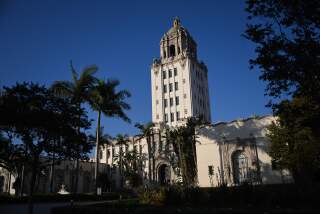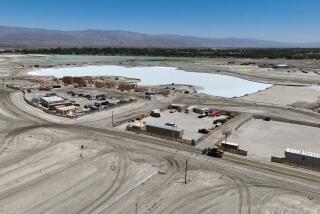Financing Woes Push Opening of Resort at Marineland Site to ’95
A long-delayed, $100-million luxury hotel proposed for the old Marineland aquatic park on Long Point in Rancho Palos Verdes may have hit another snag, officials report.
Although governmental requirements have been met and regulatory signals are go, financing has become a problem. Developers blame the recession, and say that until financing is found, plans to build the 450-room destination resort and conference center will have to wait.
“There’s no way the hotel could open before 1995,” said Simon Whitmey, spokesman for Phoenix developer James G. Monaghan. “It’s a question of finding financing at this stage.”
Further delays come as a disappointment to city officials, who see the project as a potentially rich revenue source that could help this hard-pressed city out of a financial hole. The bed tax from the hotel will return an estimated $2 million a year, almost enough to pay off the current deficit, officials said.
Although the deadline for filing final plans for the resort has passed, acting city Planning Director Carolyn Petru said Monaghan has been given more time to find financing.
“We know it is very difficult to find financing for luxury resorts at this time,” she said.
A bedroom city of 42,000, Rancho Palos Verdes has a relatively small tax base because it has discouraged commercial development in the past. And when Marineland closed nearly five years ago, things only got worse.
City leaders were elated when Monaghan bought the property and proposed the upscale resort, which will include a hotel, golf course, tennis courts and convention center on the 102-acre site on the bluffs above the Pacific. The resort also will have a 25,000-square-foot fitness center, two restaurants, hiking trails and beach access.
Environmentalists were appalled by the prospect of the development and, led by a group called Save Our Coastline 2000, fought the proposal every step of the way. After a long battle, the city approved the project last July.
Environmentalists appealed to the state Coastal Commission, which declined to block the development.
However, the commission required the developer to add a small public park and more public access to the bluffs and the rocky beaches. It also required a $540,000 environmental mitigation fee, which will go toward the construction of youth hostels in the South Bay, officials said.
The developer protested the added requirements at the time, but Whitmey said the matter is closed and there are no plans to try to overturn the new conditions.
These final conditions are being drafted in a staff report that the Coastal Commission is expected to adopt this month or next, Petru said. Barring any unexpected problems, that will be the final regulatory hurdle, she said.
“The real holdup now is the financing,” City Manager Paul Bussey said. “This isn’t an ideal time for developers.” He estimated that once funding is found, it will take at least three years to build the project.
More to Read
Sign up for Essential California
The most important California stories and recommendations in your inbox every morning.
You may occasionally receive promotional content from the Los Angeles Times.










